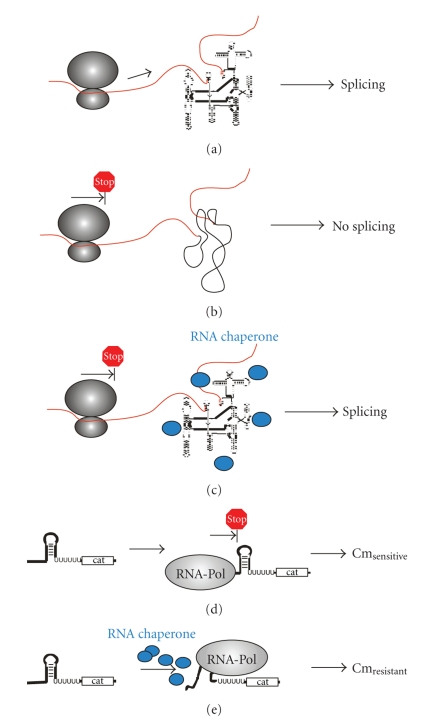Figure 2.
In vivo chaperone assays. (a–c) show the in vivo folding trap assay: (a) In the presence of translation, the group I intron folds correctly. (b) In the absence of translation, misfolding of the group I intron occurs. (c) Proteins with RNA chaperone activity loosen misfolded structures and splicing can proceed. (d–e) show the in vivo antitranscription termination assay. (d) The transcription terminator stem folds and transcription of the chloramphenicol acetyl transferase cannot proceed. Thus, cells are chloramphenicol sensitive. (e) Proteins with RNA chaperone activity loosen the terminator stem, transcription can occur, and the cells become chloramphenicol resistant.

